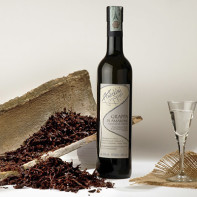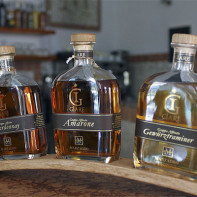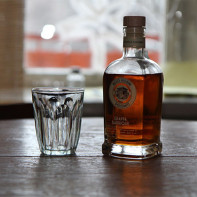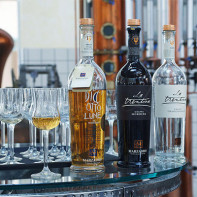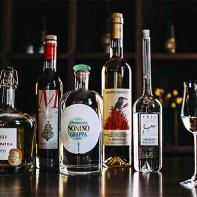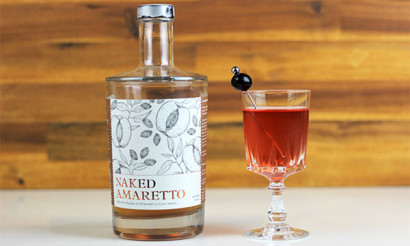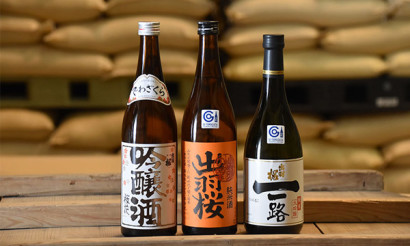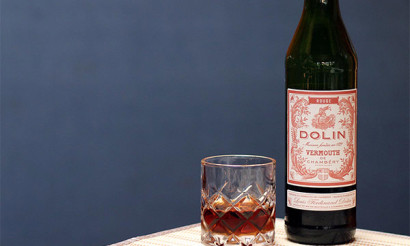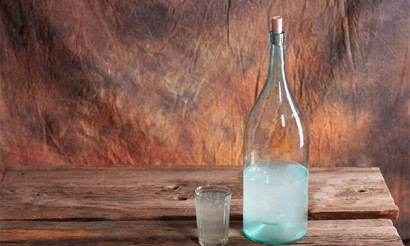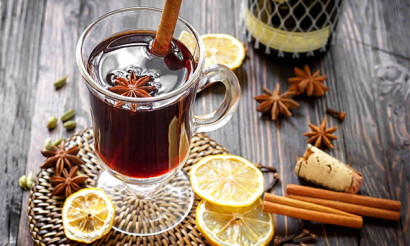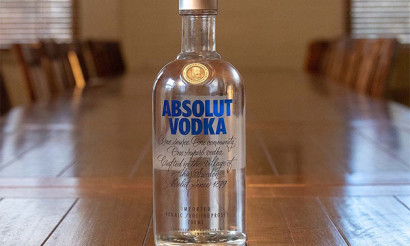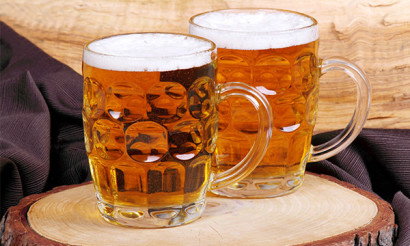How to drink grappa properly
Grappa is an alcoholic beverage made from grapes with a strength of 36 to 55 degrees, which is classified as brandy. As for the origin of the name, there are two versions. The first suggests that it comes from the word "graspa", which means "grapevine" in the Italian Veneto region. The second claims that grappa got its name from the name of the province of Bassano del Grappa. But neither of these is officially confirmed.
- What is grappa
- Types of
- Composition and calories
- How to drink grappa properly
- Grappa Cocktails: Recipes
- Italian Wife
- Clover
- Grappa Manhattan
- Grappato
- Venetian Sunset
- Genre Classics
- Julep
- Groll Waldostana
- Citrus
- Dolce
- Italian boarding
- Mint Grape
- How to make grappa at home
- The benefits and harms of grappa
What is grappa
Grappa is an alcoholic beverage made from grape cake left over after the juice has been pressed for wine. Despite its, frankly speaking, non-aristocratic origins, it has managed to conquer the whole world thanks to its original bright taste.
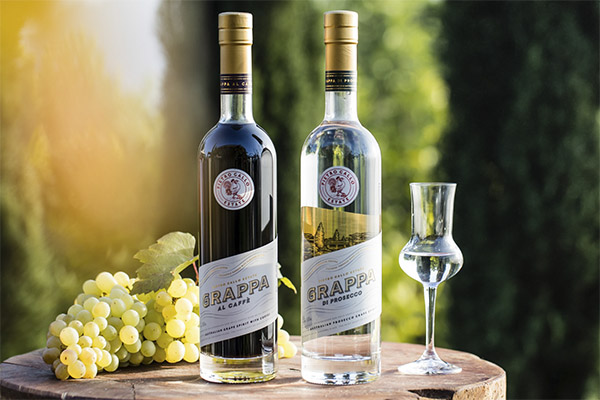
According to a legend, a Roman legionary returning home from Egypt in first century A.D. stole a distillery which became an ancestor of grappa. That legionary got the first distillate from grape cake.
But the real revolution in the history of the drink was the first Nardini distillery, which appeared in 1779 in Bassano del Grappa. The distillery introduced the technique of steam distillation, which is still in use today.
So, grappa is produced by distilling grape pips. Although it is classified as a brandy, grappa is not 100% brandy. For brandy production, grape must is used, while it is made from oilcake or pulp.
In order to get a quality grappa, one must take quality raw material. As a rule, the pulp after making red wine is used for this purpose. The press cake goes through the fermentation process in the mash, as a result it contains alcohol and a small amount of sugar, so it does not require additional preparation.
It is also possible to use waste from white and rosé wine. White wine pomace does not ferment, so it contains a lot of sugar and no alcohol, while rose wine pulp does, but not for long. This is not enough to be used immediately for grappa production, so both of these types of extracts are fermented before they are used. To get the best quality grappa, the pips are removed from the mash.
For more than half a century Italian producers have used automated distillation methods. The modern distillers are devices consisting of three cone-shaped stills connected to each other. The distillation is continuous. But a number of producers believe that the beverage obtained by intermittent or periodic cycle has a better quality and therefore continue to use the old-fashioned methods.
The product coming out of the distiller has a strength of 68-85 degrees. To the typical grappa it is brought to 36-55 degrees with distilled or demineralized water.
The next stage of preparation is ageing, after which the product is filtered, purifying it from impurities of oils. The result is a clear and pure drink, in fact it is already a young grappa. It is then bottled or matured in large wooden barrels of 225 liters.
The type of wood used to make the barrels ultimately determines what kind of grappa it will be. The drink usually matures in containers made of oak, ash, acacia and cherry. Cherry barrels make the lightest grappa, while oak barrels produce an amber-colored drink. Due to the high content of tannins, grappa from oak barrels also has a special memorable taste. Particular connoisseurs note that even the type of oak influences the taste, color and aroma. The type of the final product depends on how long the drink spends in the cask.
Types
Depending on the age, the nature of the raw material and the type of grapes or additional components that give the drink a special flavor, grappa is classified into several types.
By age:
- Giovane is a young, unaged grappa. Its second name bianca, which means "white", is derived from its lack of color. It is aromatic, but has a slightly harsh taste.
- Grappa affinata in legno (affinata in legno) is a drink aged for at least six months in wooden barrels. Softer than Grappa Giovane, it has a slight touch of golden color.
- Invecchia (invecchieta) is a grappa which has been matured in wooden barrels for at least a year.
- Stravecchia, or Riserva, is a grappa that has to be kept in the cask for at least a year and a half. It is the oldest drink, it has a bright, rich flavor with woody notes and a rich aroma. Such grappa acquires a golden color over a long period of time in the barrel.
By the nature of the raw material:
- Monovitigno (olivitigno) is a grappa made from a cask that contains more than 85% of one variety, and its name is always written on the label - for example, Pinot Gris, Chardonnay, Torcolato, Nebbiolo, Muscat, Teroldego, Cabernet, Sauvignon, etc.
- Polivitigno - The raw material for this grappa contains grapes of different varieties, usually varying in ripening and harvesting time as well as winemaking methodology.
By taste:
- Aromatica (aromatica) - This grappa is called aromatic for a reason, as it was made using the raw material of Muscato or Proseco grapes, which are considered the most aromatic.
- Aromatizzata is an aromatized grappa. It is so called because it is infused with natural natural flavorings - berries (strawberries or black currants), nuts (almonds), fruits, spices (cinnamon) and herbs.
Usually the label indicates the region where the grappa comes from. It is believed that the best drinks are made in Friuli and Venice, not bad are those that come from Piedmont, Trentino and Tuscany.
Composition and calories
Grappa, like any other alcoholic beverage, does not belong to the low-calorie products, rather the opposite. Like all strong alcohol, it is quite caloric: 100 ml. contains 224 kcal. In addition, it is absorbed very well, as it consists mostly of ethanol, which begins to be absorbed in the blood even in the mouth. But it is not particularly good for the body, as the only nutrients in grappa are carbohydrates: 2 grams in a 100 gram shot. So for people concerned with losing weight grappa is unlikely to be a good idea.
How to drink grappa properly
When drinking grappa it is important to clearly distinguish the purpose: tasting is one thing, but a warm evening in the company of friends is another.
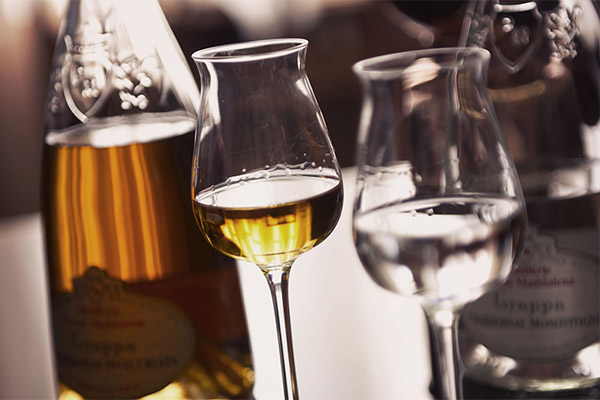
Tasting is a delicate process. It requires a number of conditions to be met. In particular, professionals recommend tasting a drink in a bright room with no extraneous sounds coming in - so that nothing interferes with the concentration on the contents of the glass. On the day of the tasting it is better not to smoke, not to use perfume, not to eat anything spicy, salty, spicy or sour and not to drink carbonated drinks and herbal teas.
Tasting should begin with a younger drink, followed by an aromatic one, and conclude with an aged one. The best temperature for grappa is 9 to 13 degrees, for an aged one it is 17 degrees. The right glass is considered to be crystal or made of ringing glass and has the shape of a tulip with a height of 10 to 15 cm. It has a narrow neck with an open top, so that the aroma is released gradually. But it is permissible to use cognac glasses as well.
In general, grappa is a typical digestif, that is, a drink served after a meal. Drink it in small doses to help digestion. It is not recommended to dilute grappa, unless it is used to make cocktails.
If you follow all the rules, grappa can be served with vases of fruit, especially oranges, plates of cheese, pistachios, olives, seafood, canapes with cheese and grapes or with ham, sauce and bread. It is not bad to serve bitter chocolate, coffee, ice cream, even small cakes. This is how grappa is presented in restaurants, bars and at social gatherings in Italy.
But the same Italians at feasts, held in a narrow friendly circle, consume it, as the Russians vodka - with a good, hearty snack. Many believe that ravioli - that is, almost Russian dumplings - is just right for this strong drink. If you're going to have a shish kebab with friends, great! You can pour grappa in the marinade, and then have a glass of grape vodka to roast meat on the campfire. By the way, lamb goes well with grappa, as well as various meat delicacies.
Connoisseurs of various pastas can also safely eat their favorite dish with this alcoholic beverage.
Italians have invented the variant of Grappa consumption as a dessert. They soak fruits in it and then pour the syrup over it. This dish is served in the evening after dinner. At the bottom of each wide-bottomed glass, they put the fruit in syrup and pour the grappa over it. At the end, they snack on the remaining fragrant fruit.
Grappa Cocktails: recipes
Italian Wife
Mix with a shaker 10 ml of freshly squeezed lemon juice, 40 ml of grappa, 5 ml of Blue Curacao liqueur. Pour the cocktail into the glass. The color of the drink is divine - light blue.
Clover
Mix 30 ml of grappa, 20 ml of freshly squeezed lemon juice, egg white and 10 ml of strawberry liqueur in a shaker (you may substitute the same amount of strawberry syrup). Pour the mixture into a glass filled with crushed ice. Garnish with a strawberry.
Grappa Manhattan
This is one of the versions of the well-known classic "Manhattan", but instead of bourbon, grappa is used here. The flavor of grappa is quite noticeable, vermouth not so much, but don't pour more than that, you could easily overdo it. Angostura tincture can be dripped a little more, but not too much. The creators of the recipe claim that this cocktail is for those with a strong spirit.
In a shaker, mix 50 ml of grappa, 25 ml of red vermouth, 1-2 dashes (or a simple plush from the dispenser) of Angostura tincture together with ice. Pour into a martini glass. Decorate this cocktail with a cherry.
Grappato .
The amaretto used here makes the cocktail much sweeter, the contrast with the sharp taste of the grappa is quite unusual.
Stir 50 ml of grappa and 15 ml of amaretto in an ice cocktail shaker. Pour into a glass, garnish with a cherry.
Venetian Sunset
The taste of this cocktail is refreshing, but the sharpness of the grappa is quite well felt. And the Campari adds a slight pleasant bitterness.
Mix 50 ml of grappa and 150 ml of orange juice in a shaker, pour into a glass filled with crushed ice, add Campari.
Classic of the genre
Completely uncomplicated cocktail, but very tasty as it completely veils the harsh taste. At the same time, the grappa and angostura keep the syrupy sweetness from sounding too loud, and the result is quite pleasant without being sugary or harsh.
Pour 20 ml of sugar syrup, 50 ml of grappa, and 1-2 dashes of angostura tincture into a glass. Add finely chopped ice.
Julep
There is some debate about this drink: is it a cocktail or not? Connoisseurs break their spears over this question, but nobody refutes the fact that it is really delicious.
Spoon two mint leaves into a glass, either with granulated sugar or powdered sugar. How much sugar to add, everyone decides for himself - this is the value of the recipe. In the same glass add finely crushed ice and pour 50 ml of grappa.
Grolla Valdostana
The recipe for this drink comes all the way back to the Middle Ages. The name of the wooden vessels with a spout, which were used to pass it around the hearth on cold winter evenings, is called grolla. Waldostan's Groll is a great warming tool for having conversations, planning the day ahead, discussing children's progress, watching a good movie together, or reading a good book.
Take 2 tablespoons of white grappa and the same amount of red wine, add 4 teaspoons of Genelli liqueur and the same amount of orange punch or Quantro, 3 teaspoons of sugar (better if it is cane), 4-5 flowers of cloves, coffee beans, 5-6 juniper berries and some orange or lemon zest.
Put all the ingredients in a saucepan and put on a low heat. Bring it to the boil, and, as the grolla is unlikely to be found nowadays, pour the resulting hot cocktail into modern thermo-cups. Nice warm evening is guaranteed!
Citrus
A pleasant acidity and delicate sweetness - these delicious features make this cocktail very tasty. It is prepared straight away in a triangular martini glass.
Pour the orange and grapefruit juice (50 ml each), then top off with grappa. Garnish your glass with a slice of orange.
Dolce
This cocktail will delight you with its sweetness and freshness - even on a summer day.
Mix grappa (40 ml), pear syrup and pear liqueur (20 ml each) in a shaker, add 5-6 drops of squeezed lemon juice. Pour it into a glass and decorate it with a slice of lemon. It is recommended to drink it through a thin straw.
Italian Boarding
Mix grappa (40 ml.) with peach syrup and squeezed lemon juice (20 ml. each) in a shaker.
Pour the cocktail into a glass and sprinkle a little orange zest for decoration.
Mint grape
Take a grappa (40 ml), mint liqueur (20 ml), add ice cubes (2-3) and mix in the shaker. Pour the cocktail into a glass and decorate it with mint leaves.
How to Make Grappa at Home
Since grappa historically began with home production, you can try to reproduce it with your own hands. You can buy for this affair grapes of the same variety and color, or experiment and combine berries of different varieties and colors. If grapes grow on your own plot of land - great! To make grape vodka (as grappa is sometimes called in common parlance) even not fully ripe berries grown in the middle zone are suitable.
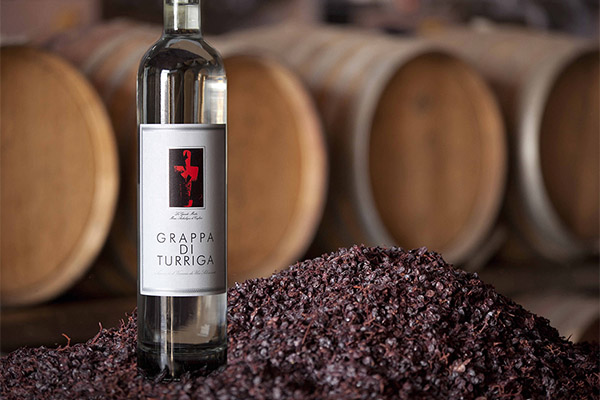
So, starting to make grappa, you need to prepare grapes in such an amount that to get from it 1 kilogram of cake. How much grapes you need for this depends on variety, state of brush and degree of maturity. You will have to achieve this by experience.
For 1 kilogram of cake take the same amount of sugar, 5 liters of water and wine yeast. The amount of yeast is calculated from the dosage indicated on their package.
Next, squeeze the grapes, you can simply through gauze. You can drink the juice, and on the remaining cake to make a brew: heat water to a temperature of 35-36 degrees, dissolve sugar in it, put there the same pomace and yeast. The resulting mass is well mixed, cover with a lid and leave for ripening. Every day it has to be stirred 2-3 times.
It ferments for at least 4 days, maybe even more, depending on the type of yeast. Its readiness is indicated by the following signs: foaming has stopped, the foam has "gone", the liquid itself has begun to lighten, there is a sediment at the bottom, the taste of the broth has become bitter.
When the broth is mature, it must be filtered and distilled twice in a distiller. You will get grape moonshine, now you can pour it into oak barrels and send it to the basement for a long storage, at least for six months.
If you do not have a barrel, but you want to experiment, you can make an excellent version of grappa in the apartment. The first option is to use oak wood chips for infusion. This is not a barrel, of course, but it gives very good results. The second option is to add fruit to the moonshine. There is also a third option - use wood chips first, and then infuse with fruit as well.
Maybe an idea to use some particular favorite herbs or spices will be born - full creative freedom!
The benefits and harms of grappa
The water of life is how grappa was called in ancient times, and it makes sense in terms of modernity. For example, this alcoholic beverage is able to warm up a frozen person in the shortest time, just 50 ml contribute to the expansion of blood vessels and accelerate blood circulation. But you should not drink alcohol in the cold, because at the same time the heat is increased, that is, the heat leaves the body. Coming home chilled and drenched at the same time, a small glass of grappa can insure against a possible cold.
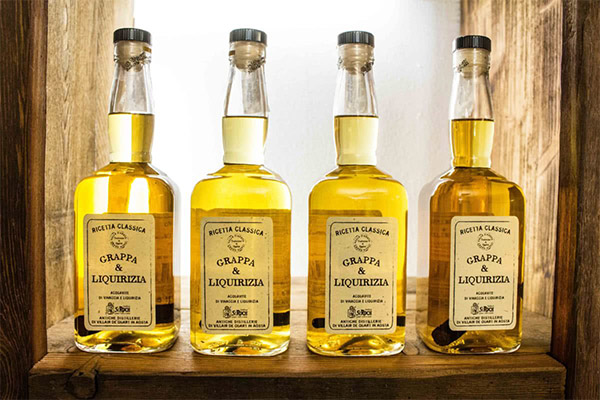
Because grappa is a strong drink, it can be used to disinfect cuts, scrapes, and abrasions, as well as to prepare medicinal tinctures.
For insomnia
For such a tincture, you will need a glass of grappa and 2 tablespoons of hop cones. Grind cones, pour the drink and send to infuse for 10 days. For insomnia or overstimulation take 15 drops twice a day.
For migraines.
Orange tincture will help with migraine and relieve headaches. You need to take half a kilo of oranges, 100 grams of horseradish root, 1 kilogram of sugar and half a liter of grappa. Chop the oranges finely, rub the horseradish with a fine grater or twist in a meat grinder. Combine both components, mix, add granulated sugar and pour the grappa diluted with boiled water in a ratio of 1:1. The resulting composition put in a saucepan on a water bath and cover with a lid. Keep in a water bath for an hour so that the sugar dissolves completely. Remove from the heat and cool, then strain and drink once a day after 2 hours after the meal, one-third of a glass.
Grappa is also used in cooking as a marinade for fish or meat, and in Italian cuisine for flambéing shrimp or meat.
Since grappa is a strong alcoholic drink, it is contraindicated to those who suffer from diseases of the gastrointestinal tract, nervous and cardiovascular systems. For the same reason, children and teenagers, pregnant and breastfeeding women should not drink grappa.
«Important: All information on this site is provided for informational purposes only. information on this site is for educational purposes only. Consult a specialist before applying any recommendations. Consult a health care professional before using any of the recommendations. Neither the editors nor the authors shall be liable for any possible harm caused by materials."

